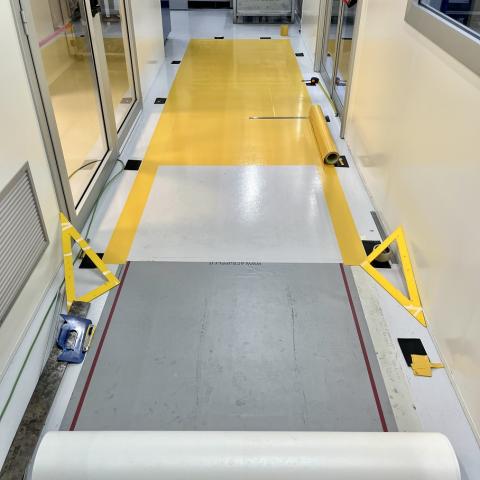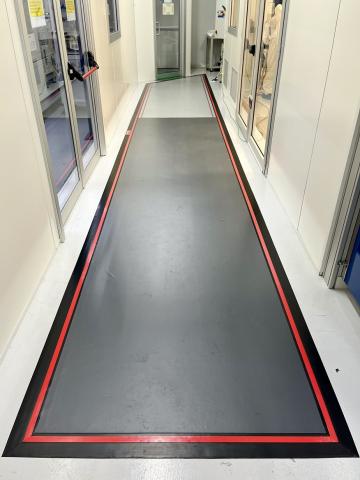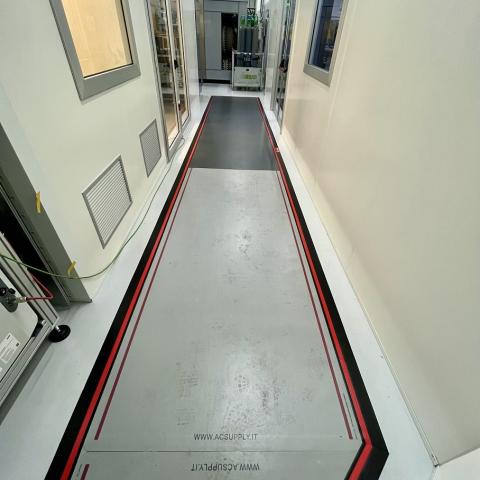Washable contamination control mats, how to start using them?

For a customer who has never seen how a fixed washable contamination control mat WZ works , the decision to acquire one can be a challenging process. Transitioning from a traditional peel-off adhesive mat to a washable one involves several factors, one of which, in particular, tends to be underestimated: cleaning the mat! With a peel-off mat, dirt, so to speak, disappears with a single peel. However, with a washable mat, it must be cleaned, and perhaps more frequently than one might initially think, given its high effectiveness.
As a result, proper daily or scheduled cleaning, depending on the shifts, becomes an integral part of the functionality of the washable contamination control. The washable mat, along with its cleaning, is the key to its long-term performance and effectiveness.
The intermediate step to installing a fixed contamination control mat can be achieved through the use of the LTE mat, which is ultra-thin at 1.5mm, decontaminating, antibacterial, and washable. There are two possible methods.
The first method involves the simple use of a smaller LTE mat (ranging from 60×120cm to 120×300cm). Once the effectiveness, efficiency, and practical suitability have been confirmed, you can then consider the use of a larger fixed mat for the passage of both personnel and carts or materials. The second, alternatively conservative, approach involves the fact that on a 120cm width, it’s possible to later “join” a fixed mat ( CZ or WZ ) to maximize the lifespan of the initially laid LTE mat (e.g., 120×180cm) used as a test, starting from the use of a peel-off mat.
The transition to washable decontamination mats should not exclude proper daily maintenance and cleaning, which must be scheduled.
Results at various levels:
- Quality – HSE:
- Maintenance of the pre-existing floor cleaning GMPs.
- Economic:
- Reduction of costs for the purchase, installation, and removal of individual peel-off mat that would be constantly repeated over time.
- Amortization over time (approximately 11-12 months – 1/2 peels per day) of the investment that would continue in the years.
*Technical:
- Inability to have long or large peel-off mats.
- Environmental:



